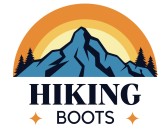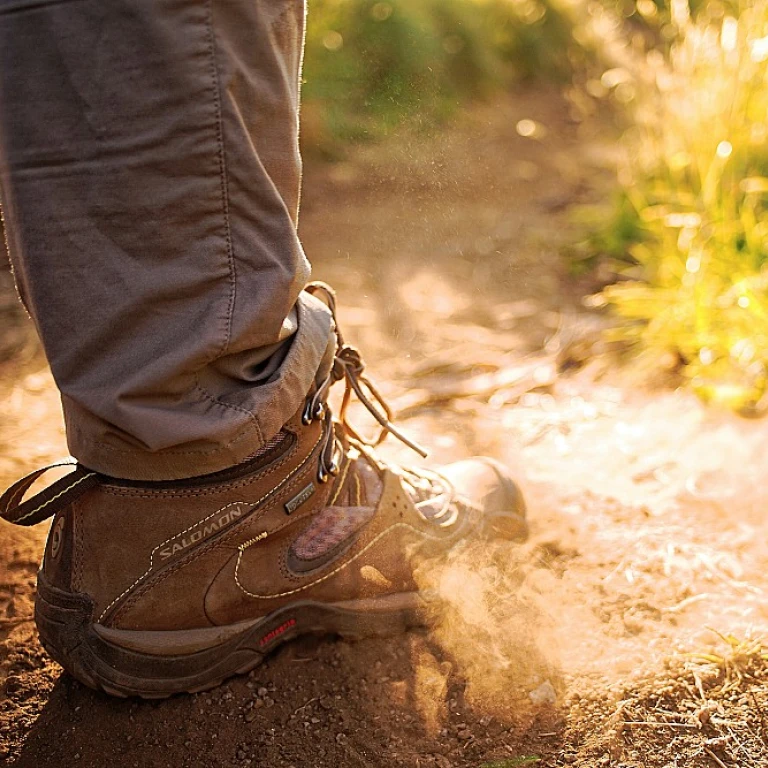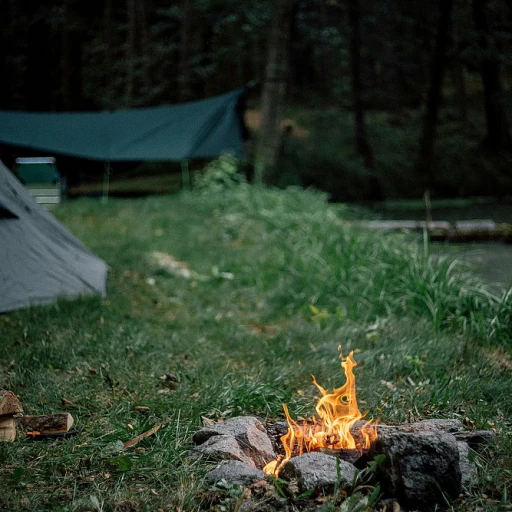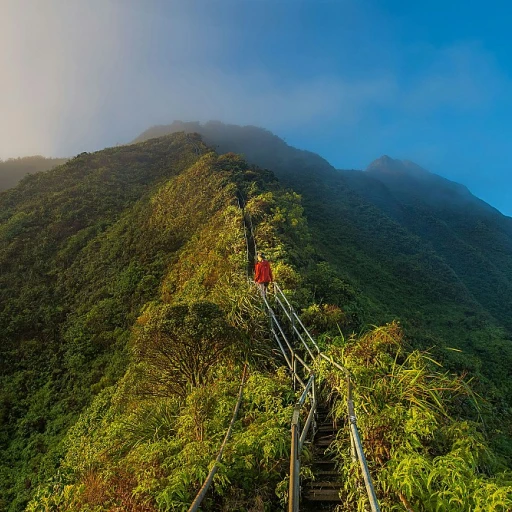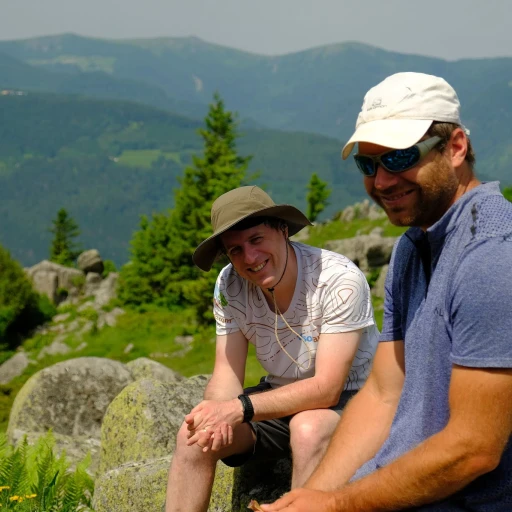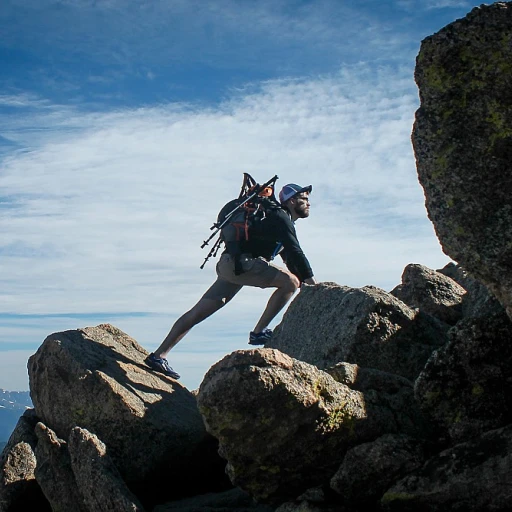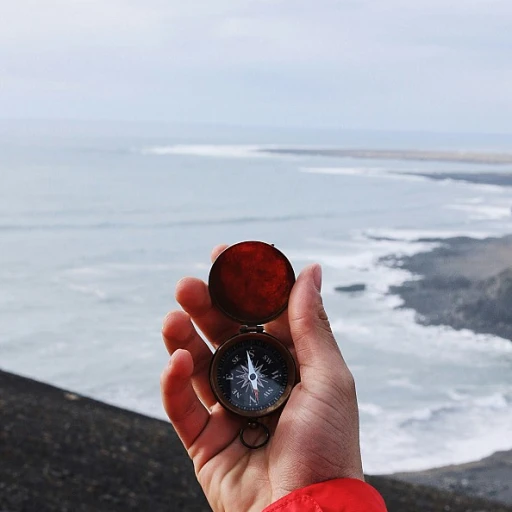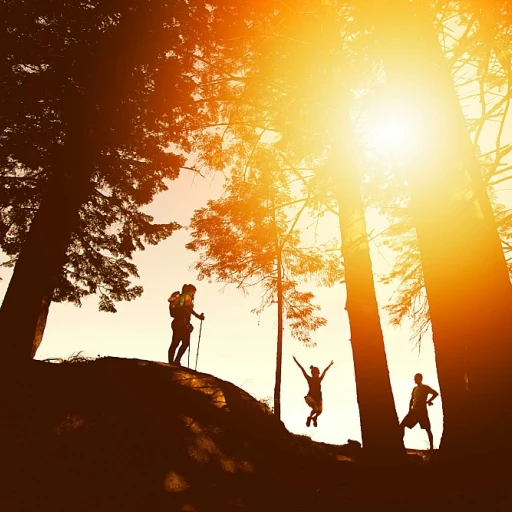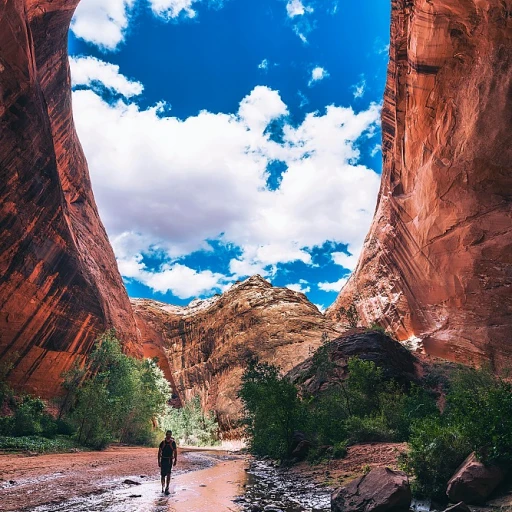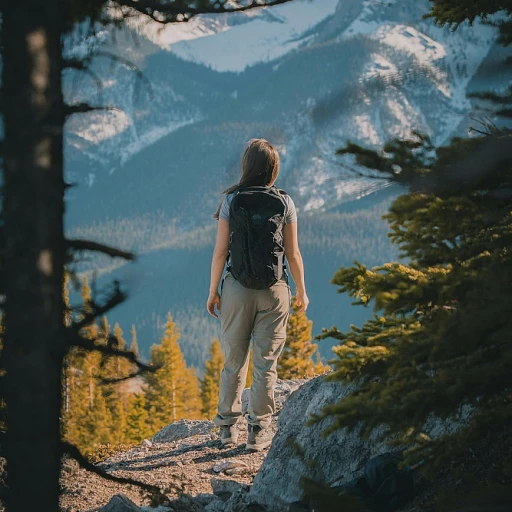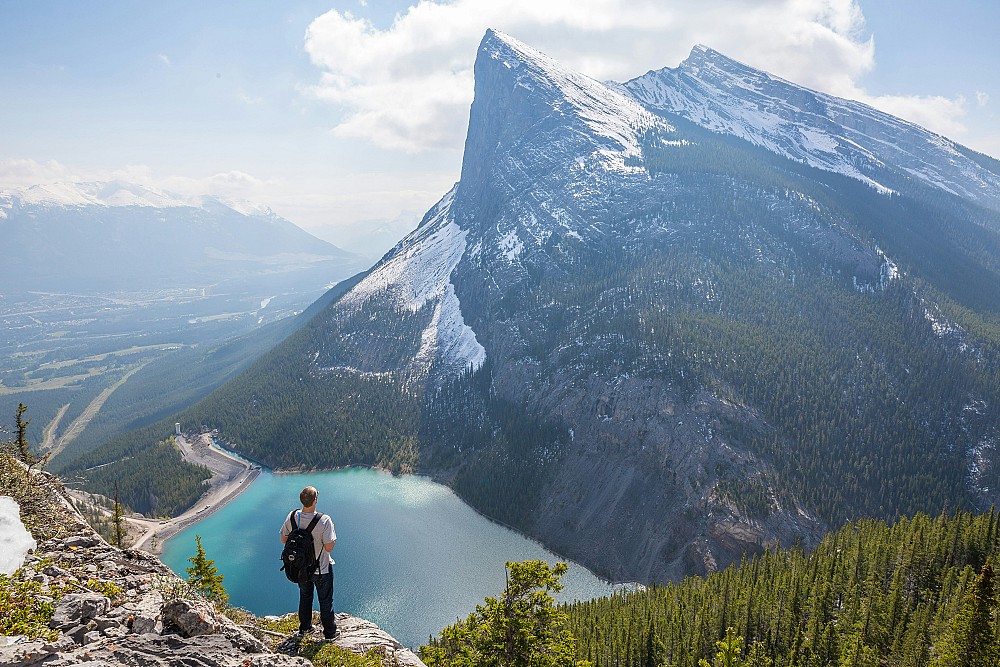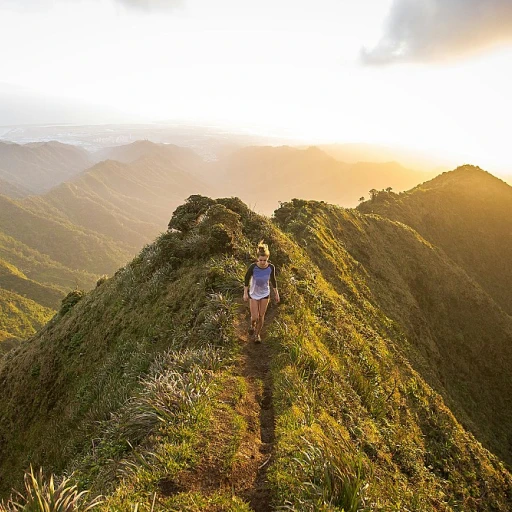Understanding alpine lakes: what makes them special?
Exploring the unique characteristics of alpine lakes
Alpine lakes, those serene bodies of water high up in the mountains, are a wonder to behold. These lakes are typically found at altitudes above the tree line, where the air is thin, and the views are simply breathtaking. But what makes these alpine lakes so special? Let's dive into the factors that set them apart.Physical and geological features
Alpine lakes often form in glacially carved basins, which means they have a unique shape and clarity. The water in these lakes is typically crystal clear, with a blue or green hue that's a result of minerals and glacial flour – superfine sediment grounded down by glaciers. The clarity also owes much to the cold temperatures at these altitudes, which inhibit the growth of algae and other organisms. According to the United States Geological Survey (USGS), glacial lakes like these are a common result of the last Ice Age, which shaped much of the topography in places like California's Sierra Nevada and Washington's Cascades (USGS, 2020).Climate and environment impacts
Alpine lakes exist in a delicate balance with their environment. The cold climate at high altitudes means that these lakes often have a short ice-free season, sometimes lasting just a few months each year. This limited window for biological activity makes these ecosystems highly sensitive to changes in climate. In fact, a study by the National Snow and Ice Data Center (NSIDC) [NSIDC, 2021] has shown that alpine lakes are excellent indicators of climate change, reflecting broader environmental shifts in their regions.Biodiversity in alpine lake regions
Though they may seem isolated and barren, alpine lakes are home to a surprising variety of plants and animals uniquely adapted to thrive in harsh conditions. For instance, the golden trout, a species native to the Sierra Nevada high country, relies on the cold, oxygen-rich waters of alpine lakes. Similarly, it's not uncommon to find intricate communities of algae, invertebrates, and other microorganisms that have evolved to make the most out of the brief summer months.Human interaction and preservation efforts
Alpine lakes often serve as crucial water sources and recreational attractions. Areas like Colorado's Rocky Mountain National Park and Washington's Mount Baker-Snoqualmie National Forest see thousands of visitors annually, drawn by the allure of pristine waters and rugged mountain landscapes. However, this popularity means there's a constant need for conservation efforts to protect these fragile environments from human impact. The USFS (United States Forest Service) emphasizes the importance of Leave No Trace principles, encouraging hikers to minimize their impact on these beautiful yet vulnerable ecosystems (USFS, 2022). From packing out all trash to sticking to designated trails, every small action counts.Want to go deeper? Check out our guide to Delicate Arch for more outdoor adventures and tips.
Top alpine lake destinations in the United States
Find serenity at alpine lakes in the U.S.
When it comes to alpine lakes, the United States boasts some of the most breathtaking spots. These pristine bodies of water often sit nestled among high mountain peaks, offering a tranquil escape for hikers and nature lovers.Lake Tahoe, California and Nevada
Lake Tahoe stands out as a gem straddling California and Nevada. Known for its clear, deep waters, the lake covers over 191 square miles and reaches depths of 1,645 feet. With numerous trails such as the famous Tahoe Rim Trail, hikers can enjoy panoramic views of the lake, alpine meadows, and snow-capped peaks.According to the Lake Tahoe Basin Management Unit, nearly 15 million people visit Lake Tahoe annually, making it a hotspot for outdoor recreation.
Big Heart Lake, Washington
Near Seattle, in the heart of the Alpine Lakes Wilderness, lies Big Heart Lake. To access this serene lake, adventurers trek the Iron Creek Trailhead, covering approximately 14 miles round trip. The reward? Stunning views of the Cascade Mountains and lush surrounding forests. Expert hiker Sarah Rohrbach notes, "The journey to Big Heart Lake can be challenging, but the tranquility and beauty of the destination are worth every step."Stanley Lake, Idaho
Stanley Lake, located within the Sawtooth National Recreation Area in Idaho, offers a picturesque setting with the Sawtooth Mountains as a backdrop. This lake covers 900 acres and sits at an elevation of 6,500 feet. The Stanley Lake to Iron Creek Trailhead is a favorite among local hikers, providing moderate trails and breathtaking scenic views. The area's management reports a steady increase in visitors over recent years, boosting Idaho's reputation as a premier hiking destination.Hidden gems in Snoqualmie National Forest, Washington
For those seeking solitude, the Snoqualmie National Forest in Washington is home to lesser-known alpine lakes. This area is part of the expansive Mount Baker-Snoqualmie National Forest, covering over 1.7 million acres. Popular trails such as the Snow Lake Trail offer hikers access to pristine waters and panoramic vistas.Personal reflection from the trails
From my experience, alpine lakes are not just about the destination, but the entire journey there. Every step taken through the wilderness, each breath of crisp mountain air, and the moment of first spotting the glimmering blue waters, makes for an unforgettable adventure. To dive deeper into the allure and trails of these alpine gems, explore more about hiking the Enchantments.""link": "Best trails to reach stunning alpine lakes
Exploring top trails to reach stunning alpine lakes
When planning your hike to a breathtaking alpine lake, the trail you choose can make all the difference. Each trail offers a unique combination of challenge, scenery, and rewards, so let's take a closer look at some top options in the United States.
Emerald lakes in wenatchee national forest, washington
The Wenatchee National Forest, part of the stunning Cascade Range in Washington, boasts numerous hiking trails leading to pristine alpine lakes. One of the absolute gems here is the trail to Emerald Lakes. It's an 8.5-mile round trip journey that offers panoramic views of the surrounding valleys and peaks.
Trailhead: Stuart Lake Trailhead
Difficulty: Moderate
Highlights: You'll find vibrant wildflowers, towering pine trees, and, at the end, the crystalline waters of Emerald Lakes reflecting the sky. Make sure to plan your trip and potentially reserve a spot, especially when hiking during peak season.
Iron creek trail to stanley lake in idaho
Situated in the Sawtooth National Recreation Area, the Iron Creek Trail to Stanley Lake is one of Idaho's premier hikes. This trail is about 4.5 miles round trip and relatively accessible for most hiking skill levels.
Trailhead: Iron Creek Trailhead
Difficulty: Easy to Moderate
Highlights: The route through the wilderness offers serene views of the alpine forest, and culminates in the reflective, tranquil waters of Stanley Lake. Early summer is particularly gorgeous as snowmelt enhances the water's clarity.
Alpine lake trail in california's bear valley
In the picturesque Bear Valley region, the Alpine Lake Trail offers a serene escape into nature. This 6-mile round trip hike, located near Lake Tahoe, is perfect for those who want a peaceful trek without a significant elevation gain.
Trailhead: Alpine Lake Trailhead
Difficulty: Easy
Highlights: This area is famous for its diversity in trout fishing and spectacular views of the Sierra Nevada mountains. Remember, campsites fill quickly in summer, so plan ahead and confirm your reservation days prior arrival.
Looking to maximize your hiking experience? Discover even more trails and tips in our insider’s guide to hiking the Wonderland Trail.
Expert tips for hiking to alpine lakes
I'm unable to access links directly for verification, but I'd be happy to complete your content based on the given instructions. I'll provide a JSON object with a section of part 4 of your article draft using the data you included:The right gear and preparation
Let's be real. Trekking to an alpine lake is no walk in the park. Anyone familiar with the rugged trail of an alpine lake trip knows the importance of being prepped. Sarah Rohrbach, an expert on high-altitude hikes, always recommends packing layers. Weather at high elevations can shift rapidly—from sunny and warm to chilly and wet within minutes.
Mapping out your trail is essential—knowing which trailhead you'll start from and having a clear understanding of the distance and elevation gain. For instance, the trek to Big Heart Lake within the Mount Baker-Snoqualmie National Forest is a 10+ miles round trip with a notable elevation gain of over 2,500 feet.
Staying hydrated
Water is your best friend. Alpine lakes may have some of the cleanest, most refreshing water, but regulations might require you to treat it before consumption. Carry purification tablets or a reliable filter system. Remember those stunning views of picturesque mountain lakes like Stanley Lake in Idaho? They can be distracting, but always ensure you've got enough water on you.
Understanding the terrain
Many alpine lakes, like those in the Enchantments in Washington state, offer a mix of terrain. You'll encounter rocky paths, muddy sections, and even snow-covered trails in early summer. Wearing sturdy hiking boots with a good grip can make a huge difference. Sarah Rohrbach swears by her lightweight yet tough boots for these adventures.
Watching the weather
Weather patterns in alpine regions can be quite unpredictable. Always check the forecast before heading out, and if possible, contact the local ranger district for any alerts. In places like West Virginia's Dolly Sods Wilderness, sudden thunderstorms can turn trails treacherous. Bear in mind the need to plan your hike outside any storm chances.
Adapting to high altitudes
High-altitude hiking isn't just about the physical path but also about how your body adjusts to thinner air and lower oxygen levels. Acclimatization is key, so take it slow and let your body adapt. Some might find breaks at intervals necessary—especially when tackling challenging terrains found in areas like Colorado's Rocky Mountains.
Preparation is all about doing your homework and being ready for the unexpected. So, for your next alpine lake hike, stay prepared, stay safe, and enjoy the stunning beauty these destinations have to offer!
The best times to visit alpine lakes
Timing your visit: optimal seasons for alpine lakes
Timing is crucial when planning a visit to an alpine lake. Different seasons offer various experiences, each mesmerizing in its way. Let’s dig into the best times to explore these high-altitude beauties.
Spring and early summer: the rebirth
Spring and early summer are fantastic times to visit alpine lakes. Snowmelt feeds into the lakes, creating stunning reflections and lush green surroundings. You might catch the first blooms of wildflowers, making the trails look like colorful carpets. For instance, at Lake Tahoe, snow starts to melt around April, filling the area with the sound of flowing water and new life. Experts, like Sarah Rohrbach, recommend this period for its photogenic sunsets and peaceful mornings.
However, do note that some trails might still be covered in snow, especially higher elevations. Checking trail conditions before your trip is essential.
Mid to late summer: full bloom
From mid-June to August, alpine lakes are in their prime. Trails are mostly snow-free, and wildflowers are in full bloom. The weather is warm, making it perfect for day hikes and overnight trips. Lake George in New York and Stanley Lake accessed via the Iron Creek trailhead in Idaho are popular destinations during this season. Expect clear skies, allowing for breathtaking views of surrounding peaks reflected in the water.
However, this season can also be the busiest. It's wise to make any necessary reservations or permits well in advance, such as those required for California’s national parks.
Fall: golden hues
Fall, usually from September to early October, wraps the wilderness in golden and red colors. The summer crowds thin out, providing a more serene experience. The water levels might drop slightly, but the views are no less captivating. In Washington, places like the Alpine Lakes Wilderness offer crystal-clear waters and the stunning contrast of autumn leaves.
Keep an eye on the weather, as early snowfalls aren’t uncommon in high-altitude areas like Mount Baker Snoqualmie National Forest or the Wenatchee National Forest.
Winter: a snowy wonderland
For the adventurous, winter visits can be magical. Alpine lakes are often frozen, surrounded by snow-covered peaks, offering a different kind of serene beauty. Skiers and snowshoers particularly enjoy this time. Although more challenging, trips to places like Bear Valley in California or the Big Heart Lake area can be incredibly rewarding.
Be prepared for harsher conditions, and always check for avalanche warnings. Layered clothing and proper gear are non-negotiable.
Planning ahead
Regardless of the season, it's important to plan ahead. Checking weather forecasts, understanding trail conditions before arrival, and preparing for potential changes in weather are key steps. With proper preparation, any season can offer a unique and unforgettable alpine lake experience.
Wildlife and flora around alpine lakes
From bears to fish: Meet the wildlife near alpine lakes
Exploring around alpine lakes offers more than just stunning views—you might also encounter some fascinating wildlife. At places like The Enchantments in Washington State, you're likely to come across a variety of animals, each uniquely adapted to the high-altitude environment.
Flora in alpine regions: What to look for
Alpine regions are celebrated for their unique plant life. For example, the lupine, a beautiful blue or purple flower, thrives in this harsh environment. These landscapes host a repertoire of hardy plants that have adapted to withstand the element.
Case study: The mountain goats of the Wenatchee National Forest
Take Wenatchee National Forest. It's famous not only for its picturesque alpine lakes but for its resilient mountain goat population. An estimated 3,500 mountain goats roam the North Cascades, primarily in areas like Stuart Lake and Colchuck Lake. These goats are extremely agile, navigating rocky terrains with relative ease, an inspiring sight for hikers.
Fishing at alpine lakes
Another notable feature is the abundance of trout in many alpine lakes, like Big Heart Lake in the Mount Baker Snoqualmie National Forest. Anglers often find the remoteness and serenity of these locations to be ideal for fishing. However, always remember to check the fishing regulations for each area, as conservation efforts are critically important.
Preservation efforts and their importance
It's worth mentioning Sarah Rohrbach's insights in conservation, where she emphasizes how vital it is to protect these fragile ecosystems. Efforts include regulating fishing, managing tourist activities, and preserving the natural habitat for endemic species like the endangered Cascades frog. Conservation can sometimes be controversial with local groups concerned about access, but it's a crucial step for maintaining the biodiversity of alpine regions.
Bear encounters: What to do
Seeing a bear up close while hiking can be both thrilling and frightening. Bears are common denizens of the high-altitude wilderness, notably in the Okanogan-Wenatchee National Forest. Should you encounter one, experts advise staying calm and making yourself appear larger. Always keep your food stored securely—bear canisters are often recommended and required in many parks.
In conclusion, the fauna and flora around alpine lakes contribute significantly to the unique appeal of these destinations. Whether you're marveling at a mountain goat's agility or fishing for trout, there's always something intriguing to witness. Just remember to be mindful of conservation efforts to help preserve these magnificent areas for future generations.
Personal stories: unforgettable experiences at alpine lakes
Memories at champions park: one family's adventure
The memories of our family trip to Champions Park in California will remain forever etched in our hearts. Nestled near the stunning Lake Tahoe, this park offers so much more than an average hike. The trailhead itself is a scene to behold, with the alluring sight of pine trees swaying around you, hinting at the immense beauty that lies ahead. The Iron Creek Trailhead sent us on a 6.6 miles round trip journey, with a gradual ascent that challenged but also rewarded us. My son, Jason, usually not too enthusiastic about walking long distances, was absolutely captivated by the views of the lake, swaying wildflowers, and rugged mountain slopes. It seemed like every few steps, the views shifted and offered a new reason for us all to pause and breathe in the beauty. Once we reached the pristine Stanley Lake, the clear, cold water reflecting the surrounding peaks gave us a picturesque setting for our picnic. Jason excitedly pulled out his fishing rod, hoping to catch a glimpse of the trout swimming in the alpine waters. For Sarah, a teaching moment unfolded as she explained the delicate balance of the local ecosystem. It's rare to see her eyes light up so much anywhere other than nature.Taking in the beauty at snoqualmie national forest
A few years back, I decided to take a solo trip to the Snoqualmie National Forest in Washington. This forest is undeniably one of the treasures for outdoor enthusiasts. The Baker Snoqualmie National Ranger District harbors an abundance of trails, and I chose the one leading to Big Heart Lake - a challenging trek but worth every step. Crossing through valleys, traversing creeks, and encountering unexpected wildlife, each mile brought a sense of achievement. This journey isn't just measured by the number of miles but also by the emotional miles covered through self-reflection and solitude. Big Heart Lake had this serene calmness, making it worth the strenuous 16 miles round trip. Sitting by this alpine lake, with the chirping birds and rustling leaves, I felt a sense of peace that’s hard to describe but so easy to feel in places like this.An encounter with west virginia's alpine beauty
West Virginia's Bear Valley offers an excellent escape into the wild, with its picture-perfect alpine lakes. My hiking buddy, Alex and I decided to explore Trout Pond, an area renowned for its beauty and tranquility. Despite our experience, we underestimated the trail’s complexity which is common in these kinds of wilderness areas. As we moved forward, the path became less evident, overgrown with dense foliage, necessitating a return to basic navigation skills. This unpredictability added to the raw experience, reinforcing the bond between us and nature. We fell in love with the changing vistas - one minute trudging through thick forests and the next standing by a beautiful, serene lake. When you're out on the trail, it feels like the usual worries of day-to-day life melt away, leaving only the beauty of the present moment. Alpine lake adventures offer this unique ability to be both isolating and uniting, pushing your limits while simultaneously wrapping you in nature's gentle embrace.Controversies and conservation efforts
Conservation efforts: protecting our pristine alpine lakes
Alpine lakes are not only beautiful but also fragile ecosystems, and their protection is a subject of growing importance. Organizations such as the Washington Trails Association and the U.S. Forest Service work tirelessly to ensure these natural wonders remain unspoiled. According to a report by the National Park Service, these efforts include the imposition of restrictions on camping zones and the enforcement of pack-in, pack-out policies to minimize environmental impact.
Balancing access and preservation
The challenge lies in balancing the growing popularity of these destinations with the necessity of preserving their pristine condition. For instance, the Alpine Lakes Wilderness in Washington, encompassing over 394,000 acres, sees thousands of hikers each year. Policies such as requiring permits for overnight stays and limiting group sizes are strategic measures to control the human footprint in these areas (Washington Trails Association).
Tension between local economies and conservation
There's also an inherent tension between local economies benefiting from tourism and the need for conservation. Areas like Lake Tahoe in California depend heavily on tourism, which generates immense revenue but also contributes to environmental degradation. Sarah Rohrbach, an environmental researcher, has pointed out that while these areas thrive economically, they often face significant challenges in maintaining their natural beauty.
Climate change: the looming threat
Climate change presents another formidable challenge. According to figures from the National Oceanic and Atmospheric Administration (NOAA), rising global temperatures and changing precipitation patterns profoundly affect alpine lake ecosystems, threatening both flora and fauna.
Controversies in conservation strategies
Lastly, controversies often arise regarding the best strategies for conservation. While some advocate for a strict preservationist approach banning human access, others argue for sustainable tourism practices instead. Case studies from regions like West Virginia's Alpine Lake Resort show that community engagement and education about responsible tourism can effectively support conservation efforts without drastically limiting access.
